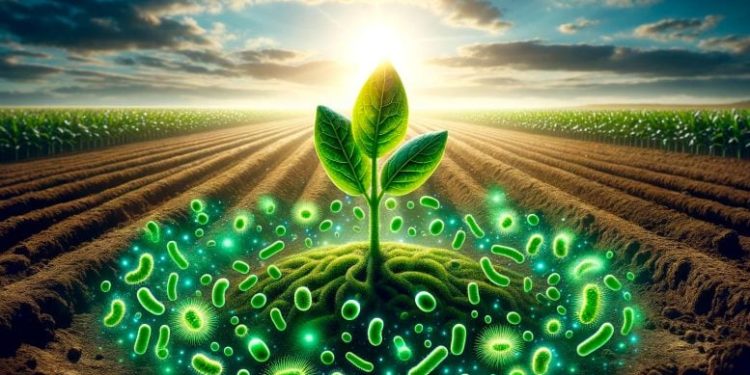#MIT #Agriculture #SustainableFarming #MicrobialFertilizers #GreenRevolution #SoilRegeneration #EnvironmentalInnovation #Nitrogen-FixingBacteria #AgriculturalEngineering #GreenhouseGasReduction#SustainableTechnology
In a recent study published in the Journal of the American Chemical Society, MIT chemical engineers introduced a revolutionary metal-organic coating designed to shield nitrogen-fixing bacteria, addressing challenges in scaling up their production and transportation to farms. Chemical fertilizers, contributing to 1.5 percent of global greenhouse gas emissions, could see a sustainable alternative in bacterial fertilizers.
The innovative coating, known as a metal-phenol network (MPN), preserves bacterial cells’ integrity, allowing for improved germination rates in various seeds, including corn and bok choy. These coated bacteria withstand heat up to 132 degrees Fahrenheit, eliminating the need for cold storage during transportation. The study, led by Ariel Furst, highlights the potential for widespread distribution and cost-effectiveness, making microbial fertilizers more accessible to farmers.
Traditional Haber-Bosch methods for chemical fertilizer production are not only carbon-intensive but also deplete soil nutrients over time. In contrast, regenerative agriculture, incorporating nitrogen-fixing bacteria, aims to restore soil health sustainably. While some farmers have embraced microbial fertilizers, on-site fermentation remains cost-prohibitive for many.
Shipping live bacteria to rural areas faces challenges due to heat susceptibility and delicate structures. Furst’s solution involves applying the MPN coating, a metal-phenol network that protects bacteria from both heat and freeze-drying damage. The FDA-approved components, including iron, manganese, aluminum, and zinc, ensure safety and environmental friendliness.
The researchers tested 12 different MPNs, encapsulating Pseudomonas chlororaphis, a nitrogen-fixing bacterium. All coatings effectively protected the bacteria from high temperatures and humidity, crucial for their viability during transportation. Seed germination experiments revealed that the most efficient MPN, a combination of manganese and epigallocatechin gallate (EGCG), improved germination rates by 150 percent compared to untreated seeds.
Ariel Furst, the lead researcher, has founded Seia Bio to commercialize this technology for regenerative agriculture on a large scale. The cost-effectiveness of the manufacturing process is expected to benefit small-scale farmers without the infrastructure for on-site fermentation, democratizing access to sustainable agricultural practices.
MIT’s pioneering metal-organic coating marks a significant stride toward sustainable agriculture, promising a reduction in greenhouse gas emissions and improved soil health. The breakthrough could transform the way farmers deploy fertilizers, making regenerative agriculture more accessible and cost-effective for all.

































